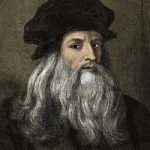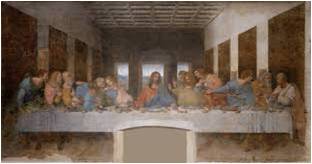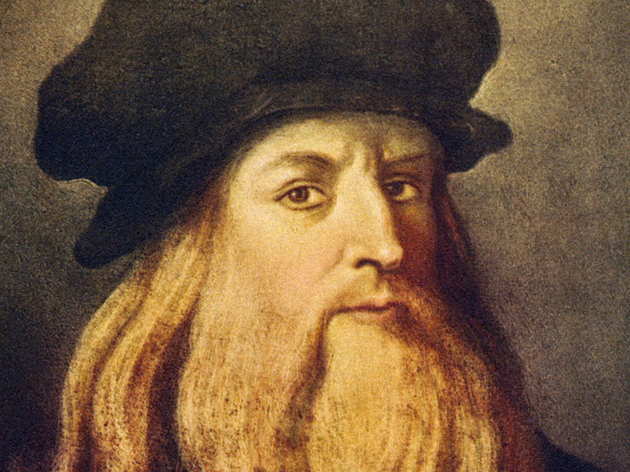
Leonardo Da Vinci deserved the title of most versatile artist of which we have news. Painter, draftsman, sculptor, architect, astronomer, as well as war engineer and hydraulic engineer among other crafts, whose mind will always be the object of admiration. Together with Raphael and Michelangelo they founded the Renaissance. Born in the village of Vinci in the region of Florence, Italy, on April 15, 1452, he was the illegitimate son of Ser Piero a rural landowner and a peasant woman Catarine. In a reference to his hometown, he adopted the surname Da Vinci.
From an early age, his artistic abilities were soon noticed by his father who gathered some of his works and directed the workshop of Andrea del Verrocchio (1435-1488), a figure of great importance in the area of the arts and craft of the region. Leonardo at the age of 14 was accepted in Verrocchio’s workshop, becoming his apprentice. Soon, at the age of 20, he joined the Florence Painters’ Corporation, which was already admired and accepted by other artists and intellectuals. He lived in Milan, Venice and Rome until he was invited in 1516 by the French ruler Francis I to live in Clous Castle in France. At the age of seventy-six, with his right hand paralyzed, he died on May 2, 1519. Before leaving, Da Vinci, who was left-handed, left several manuscripts that later would be assembled in the Treaty on Paintin
In Verrocchio’s workshop, Leonardo had the learning he would take for a lifetime. He learned casting techniques and their secrets; from nude models and draped dresses, learned to prepare paintings and sculptures; learned to draw animals and plants, as well as, had a solid foundation in learning from the perspective and use of colors.
Da Vinci was an artist whose genius aroused curiosity for almost everything in nature. He was one of the first to probe the secrets of the human body and the development of the fetuses in the womb, dissecting corpses. He watched the flight of birds and insects, the growth of plants, the shapes, sounds, and colors of nature, which in turn, would be the basis of his art. In addition, he devoted himself to writing from right to left so that his notes could only be read reflected in the mirror and he was the inventor of a technique that the Italians called “sfumato”, which consisted in making a form blend the other by means of blurred contours and soft colors. Leonardo Da Vinci refused to deliver an order of a painting until he had satisfied it.
As an inventor he has created hundreds of projects for hydraulics, cosmology, geology, mechanics, music and audacious engineering projects. In the 1960s in Madrid, more than 700 pages of drawings on aviation, architecture and mechanical engineering were discovered, dating from 1491 to 1495. Although most of his projects have never been off the paper, his contribution to the sciences is undeniable.
Among his most famous works are Mona Lisa or Gioconda (1503-1505) in which he made use of the blurred technique that he had created, is currently in the Louvre Museum in Paris; and The Last Supper (1495-1497), a mural depicting Christ and his apostles commissioned by the Church of St. Mary of Grazie in Milan. The fact that he did not sign his works causes many of his works still be lost, In addition, he gained fame for leaving much of his work unfinished. Pope Leo X in referring to this characteristic said: “Da Vinci likes more the way than the arrival, more the process than the result.”
Leonardo da Vinci the painter


